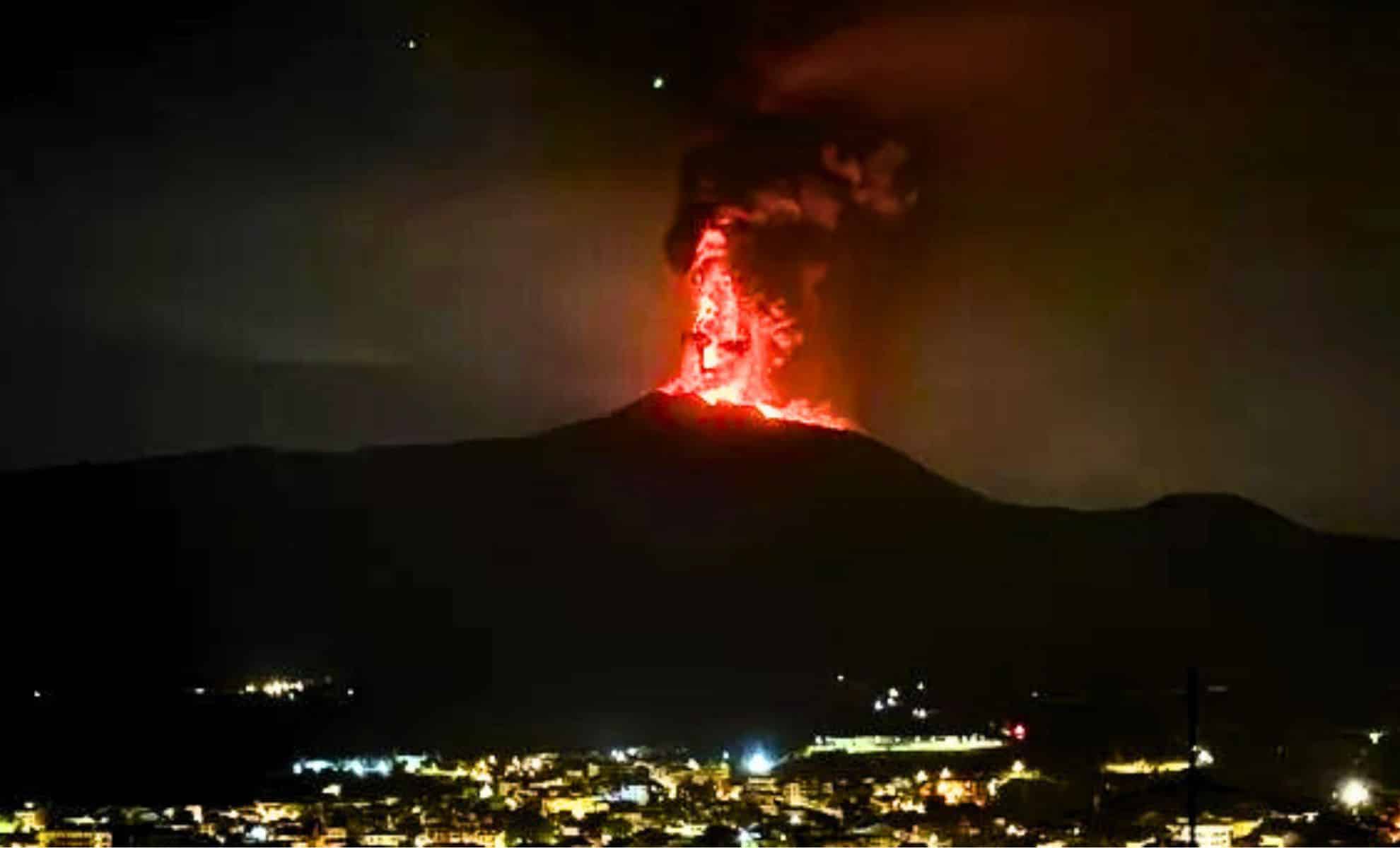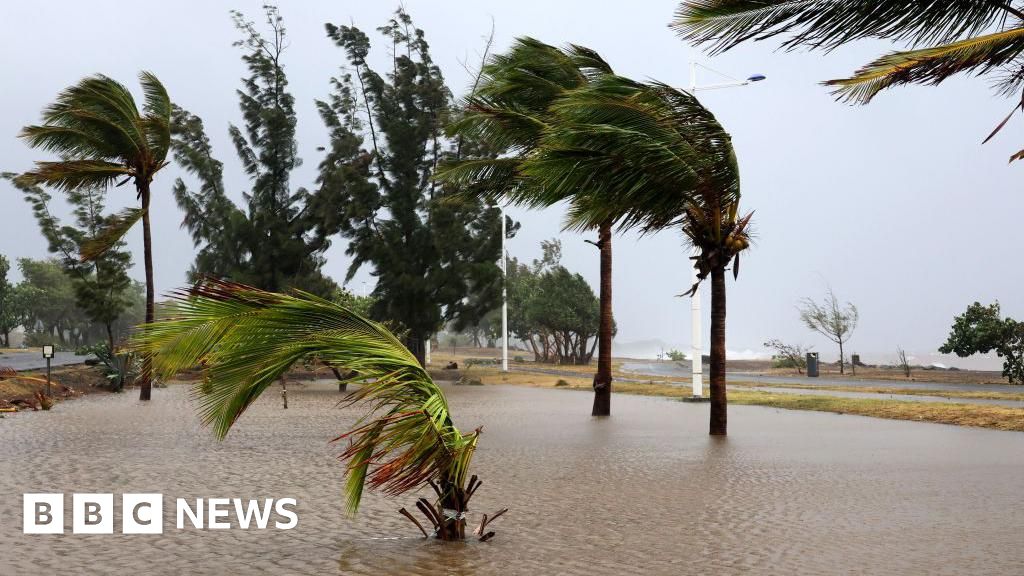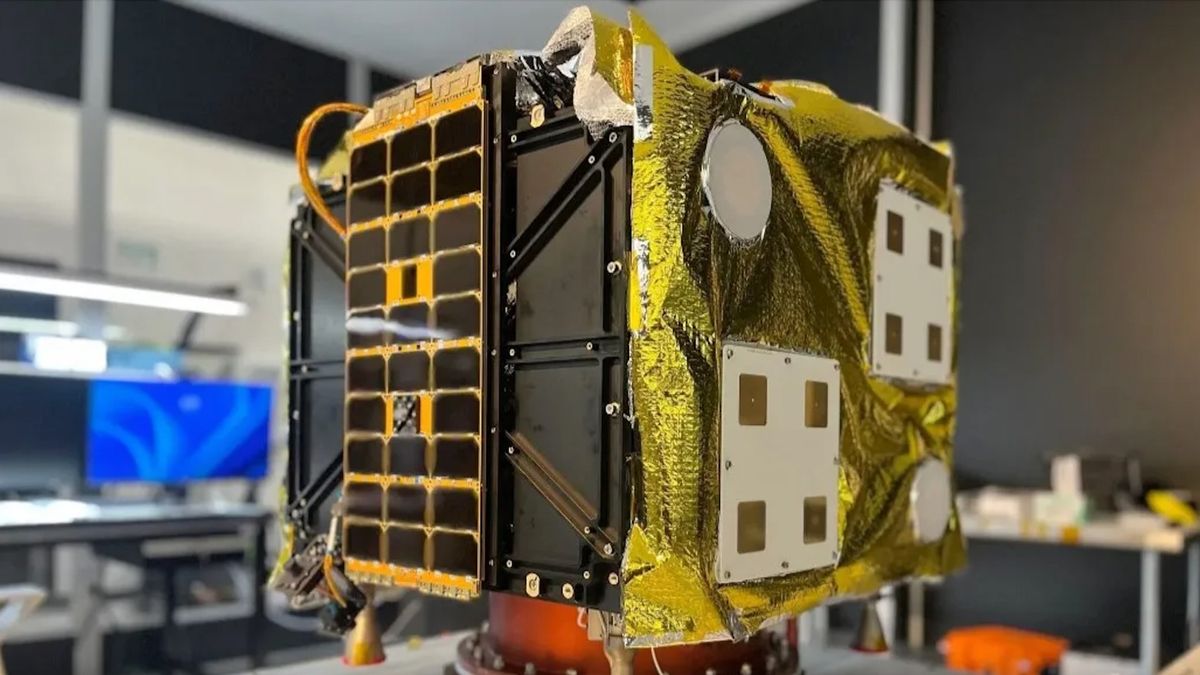
Mount Etna, the most active volcano in Europe, is once again captivating attention with its spectacular eruption that began on February 8, 2025. This iconic Italian volcano has been releasing streams of lava and clouds of ash from the Bocca Nuova crater, transforming the Sicilian landscape with vibrant hues of orange and deep black.
While the eruption has created a magnificent sight for viewers, it has also posed significant challenges for local authorities, resulting in disrupted air travel, overburdened emergency services, and an influx of adventurous tourists venturing to the slopes despite the inherent risks.
Lava Streams Erode Snow, Impacting Everyday Life
The Italian National Institute of Geophysics and Volcanology (INGV) has reported that the current eruption is characterized by a medium-high intensity, with lava flows extending nearly three kilometers down the snow-laden slopes of the volcano.
By February 20, the advancing lava had reached an elevation of 1,950 meters, incinerating surrounding plant life and isolating the Altamontana ski slope at approximately 1,800 meters.
Explosive bursts from the volcano have led to significant ash dispersal into the atmosphere, causing interruptions at Catania Airport, where 32 flights were rerouted within a single day earlier this week.
Although air travel has resumed, the Aviation Color Code remains at Red, the highest warning level, as meteorologists caution that gusty winds could transfer additional ash clouds over the airport at any time.
At the same time, residents of Catania and surrounding areas are contending with volcanic dust accumulating on streets, vehicles, and rooftops.
Today, Mount Etna Erupts in Dazzling Display, Sicily, Italy 🇮🇹 (February 12, 2025)
A breathtaking eruption at the Bocca Nuova crater illuminated the evening sky, juxtaposed against the moon’s glow, snow-covered peaks, and Strombolian explosions from the southeast crater.… https://t.co/riE0GJ5N5y pic.twitter.com/33cWjDYD76
— Weather Monitor (@WeatherMonitors) February 12, 2025
A Tourist Attraction and a Challenge for Authorities
Etna’s eruption is drawing significant interest from thrill-seekers, captivated by the surreal contrast of glowing lava and icy landscapes. Social media is abuzz with clips of skiers navigating near the incandescent flows and hikers daringly approaching the edges.
However, with an estimated 1,000 visitors daily trying to catch a glimpse of the action, local officials are finding it increasingly difficult to manage the situation.
On February 16, rescue teams were called to assist a hiker who strayed too close to the perilous area, underscoring the mounting risks associated with what’s being termed “wild tourism.” Salvo Cocina, head of Sicily’s civil protection agency, has expressed concern over the unmanageable crowds, with visitors frequently disregarding safety barriers and obstructing access on narrow mountain roads.
In light of these challenges, the mayor of Adrano has instated a ban on access to the lava front and is using social media to encourage tourists to abide by safety precautions. Despite these efforts, conditions at approximately 1,800 meters remain particularly hazardous due to ongoing lava activity.
Civil protection officials and park rangers are confronting difficulties in controlling the number of visitors trying to approach the volcanic activity.
Experts Caution About Potential Steam Explosions
Although the flow of lava is slow, it is far from predictable. Volcanologist Giovanni has warned the public to maintain a safe distance of 100 to 200 meters from the lava streams, as the combination of hot magma (around 800°C) meeting snow could result in steam explosions. These unexpected eruptions can hurl glowing lava fragments into the sky, presenting a serious threat to those too close.
The interplay of falling stones, unstable terrain, and unpredictable lava movements renders the eruption zone particularly perilous. Civil protection teams remain vigilant, encouraging visitors to adhere to safety guidelines to ensure both their well-being and that of emergency responders.
A Historic Volcano, A Living Laboratory
Despite the turmoil, Mount Etna is an invaluable research resource for scientists. Towering at 3,350 meters, this volcano has a rich history of eruptions, with records dating back to 425 B.C.. Unlike other catastrophic volcanoes, Etna’s gradual lava flows seldom threaten populated areas, making it one of the most intensely studied volcanoes globally.
Volcanologist Boris Behncke from the Etna Observatory remarked that the ongoing eruption is consistent with the volcano’s typical sub-terminal behavior, emerging from a fissure rather than the principal crater. “This is Etna exhibiting its well-known characteristics,” he added, emphasizing that while the eruption may appear dramatic, it follows a routine pattern recognized by experts in the field.









